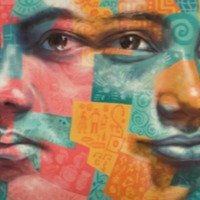
Bianca
There are an estimated 403,000 people living in modern slavery in the United States (GSI 2018). Sex trafficking exists throughout the country. Traffickers use violence, threats, lies, debt bondage and other forms of coercion to compel adults and children to engage in commercial sex acts against their will. The situations that sex trafficking victims face vary, many victims become romantically involved with someone who then forces them into prostitution. Others are lured with false promises of a job, and some are forced to sell sex by members of their own families. Victims of sex trafficking include both foreign nationals and US citizens, with women making up the majority of those trafficked for the purposes of commercial sexual exploitation. In 2015, the most reported venues/industries for sex trafficking included commercial-front brothels, hotel/motel-based trafficking, online advertisements with unknown locations, residential brothels, and street-based sex trafficking. Bianca began speaking to a man she had met online and when she turned sixteen, she left home and travelled to see him. She went to Vegas where the man trafficked her into prostitution. He threatened to kill anyone that tried to take her home and forced Bianca to start taking drugs. She was finally able to leave and later heard that he had been arrested.

Ali
There are an estimated 403,000 people living in modern slavery in the United States (GSI 2018). Sex trafficking exists throughout the country. Traffickers use violence, threats, lies, debt bondage and other forms of coercion to compel adults and children to engage in commercial sex acts against their will. The situations that sex trafficking victims face vary, many victims become romantically involved with someone who then forces them into prostitution. Others are lured with false promises of a job, and some are forced to sell sex by members of their own families. Victims of sex trafficking include both foreign nationals and US citizens, with women making up the majority of those trafficked for the purposes of commercial sexual exploitation. In 2015, the most reported venues/industries for sex trafficking included commercial-front brothels, hotel/motel-based trafficking, online advertisements with unknown locations, residential brothels, and street-based sex trafficking. Ali was trafficked at the age of 22, in Philadelphia, USA. Heroin addiction led to Ali living on the streets, to prostitution and ultimately, to being trafficked. She was on the streets for five years. This is her story in her own words.
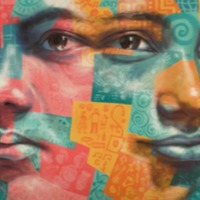
Adelina Y.
There are an estimated 61,000 people living in modern slavery in Saudi Arabia (GSI 2018). It is a source and destination country for men and women trafficked from South and South East Asia and Africa. People voluntarily migrate to the country to work in a variety of sectors including construction and domestic service; many of these workers are vulnerable to forced labour. Traffickers and brokers often illegally recruit migrants to work in Saudi Arabia and subsequently forced them into domestic servitude or debt bondage. Female domestic workers are particularly at risk of trafficking due to their isolation inside private residences. Non-payment or late payment of wages remains a complaint from foreign workers, while employer's withholding of worker's passports remains a significant problem. Trafficking perpetrators include businesses of all sizes, private families, recruitment companies in both Saudi Arabia and labor-sending countries, and organized criminal elements. Adelina travelled from the Philippines to Saudi Arabia for work to support her family and enable her children to go to school. She was prevented from contacting her family and subjected to verbal abuse by her employer.
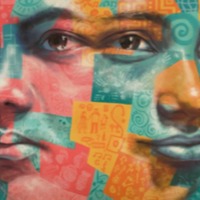
Y
There are an estimated 136,000 people living on conditions of modern slavery in the United Kingdom (Global Slavery Index 2018). According to the 2017 annual figures provided by the National Crime Agency, 5, 145 potential victims of modern slavery were referred through the National Referral Mechanism in 2017, of whom 2,454 were female, 2688 were male and 3 were transgender, with 41% of all referrals being children at the time of exploitation. People are subjected to slavery in the UK in the form of domestic servitude, labour exploitation, organ harvesting and sexual exploitation, with the largest number of potential victims originating from Albania, China, Vietnam and Nigeria. This data however does not consider the unknown numbers of victims that are not reported. Y was trafficked from Nigeria to the United Kingdom at five years old. She was forced to clean, prevented from leaving the house or going to school and made to look after the family’s baby. Y was physically, emotionally and mentally abused by the family that had bought her. When she was 11, the family moved back to Nigeria and sold Y to their friend. She remained in the UK and was forced to work long hours doing housework. When she was 14, she was also forced to make cakes for the woman to sell and make money. She finally ran away and went to live with a foster family while the police and social services worked on her case.
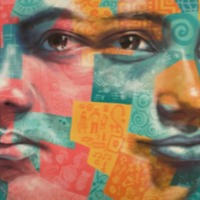
Grace
There are an estimated 136,000 people living on conditions of modern slavery in the United Kingdom (Global Slavery Index 2018). According to the 2017 annual figures provided by the National Crime Agency, 5, 145 potential victims of modern slavery were referred through the National Referral Mechanism in 2017, of whom 2,454 were female, 2688 were male and 3 were transgender, with 41% of all referrals being children at the time of exploitation. People are subjected to slavery in the UK in the form of domestic servitude, labour exploitation, organ harvesting and sexual exploitation, with the largest number of potential victims originating from Albania, China, Vietnam and Nigeria. This data however does not consider the unknown numbers of victims that are not reported. Grace was trafficked from Nigeria to the UK into forced prostitution by a local woman who used the traditional African belief of Juju to threaten her. Eventually she escaped and told the police what happened but her trafficker and the woman that sold her fled the UK.
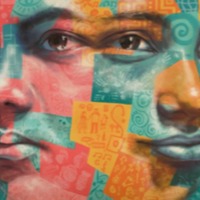
Melody
There are an estimated 136,000 people living on conditions of modern slavery in the United Kingdom (Global Slavery Index 2018). According to the 2017 annual figures provided by the National Crime Agency, 5, 145 potential victims of modern slavery were referred through the National Referral Mechanism in 2017, of whom 2,454 were female, 2688 were male and 3 were transgender, with 41% of all referrals being children at the time of exploitation. People are subjected to slavery in the UK in the form of domestic servitude, labour exploitation, organ harvesting and sexual exploitation, with the largest number of potential victims originating from Albania, China, Vietnam and Nigeria. This data however does not consider the unknown numbers of victims that are not reported. Melody was brought from Nigeria to the UK by a family friend at 12 years old. Upon arrival she was taken to a woman’s house where she was forced to clean every day for long hours under constant verbal abuse. This woman started bringing men to the house to sexually abuse Melody. Melody was kicked out of the house one day when she refused to sleep with one of the men the woman had brought to her. She spent months homeless on the street where she was subjected to further sexual violence. She was finally able to leave her situation with the help of an advisor from Refugee Council.
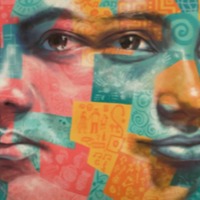
Grace
There are an estimated 136,000 people living on conditions of modern slavery in the United Kingdom (Global Slavery Index 2018). According to the 2017 annual figures provided by the National Crime Agency, 5, 145 potential victims of modern slavery were referred through the National Referral Mechanism in 2017, of whom 2,454 were female, 2688 were male and 3 were transgender, with 41% of all referrals being children at the time of exploitation. People are subjected to slavery in the UK in the form of domestic servitude, labour exploitation, organ harvesting and sexual exploitation, with the largest number of potential victims originating from Albania, China, Vietnam and Nigeria. This data however does not consider the unknown numbers of victims that are not reported. Grace was born in the Philippines then moved to the United Arab Emirates before travelling to London for work as a domestic worker. She was forced to work long hours with little rest and was subjected to physical and sexual abuse. After three years Grace ran away and was introduced to an organisation for domestic workers.
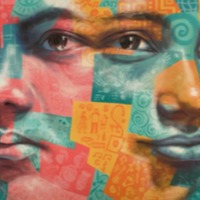
Rukmini
There are an estimated 136,000 people living on conditions of modern slavery in the United Kingdom (Global Slavery Index 2018). According to the 2017 annual figures provided by the National Crime Agency, 5, 145 potential victims of modern slavery were referred through the National Referral Mechanism in 2017, of whom 2,454 were female, 2688 were male and 3 were transgender, with 41% of all referrals being children at the time of exploitation. People are subjected to slavery in the UK in the form of domestic servitude, labour exploitation, organ harvesting and sexual exploitation, with the largest number of potential victims originating from Albania, China, Vietnam and Nigeria. This data however does not consider the unknown numbers of victims that are not reported. Rukmini was born in a village in India. When she was 18, she moved to Mumbai to find a job as a domestic worker and then came to London with the family she was working for. Upon arrival in London she was forced to work long hours with no days off. Rukmini wants to look for a new job and continue to learn English.

Mila
There are an estimated 136,000 people living on conditions of modern slavery in the United Kingdom (Global Slavery Index 2018). According to the 2017 annual figures provided by the National Crime Agency, 5, 145 potential victims of modern slavery were referred through the National Referral Mechanism in 2017, of whom 2,454 were female, 2688 were male and 3 were transgender, with 41% of all referrals being children at the time of exploitation. People are subjected to slavery in the UK in the form of domestic servitude, labour exploitation, organ harvesting and sexual exploitation, with the largest number of potential victims originating from Albania, China, Vietnam and Nigeria. This data however does not consider the unknown numbers of victims that are not reported. Mila was born in the Philippines where she began working as a child. She travelled to the UK for employment as a domestic worker. Her labour was exploited. Mila had no freedom of movement and was subjected to abuse in her employer’s house. She is now living in the Philippines and no longer works as a domestic worker.

Mary Joy
There are an estimated 10,000 people living in modern slavery in Lebanon (GSI 2018). Human traffickers exploit domestic and foreign people in Lebanon, and people from the country abroad. Women and girls from South and Southeast Asia and an increasing number from East and West Africa are subjected to domestic servitude in Lebanon. Lebanese government officials and NGOs report most employers withhold their workers passports, putting them at risk of trafficking. NGOs also report that abuse of domestic is underreported. Many migrant workers arrive in Lebanon through legal employment agencies but are subsequently exploited or abused by their employers; some employment agencies recruit workers through fraudulent or false job offers. Mary Joy left the Philippines in December 2013 after being promised work in a hotel. She left her three children to go and work in Lebanon. Upon arrival, she found out she would be working in a house. She worked long hours with no rest. Her employer controlled her movement, access to the internet and listened in on her phone calls. Mary Joy was able to leave her employer but was forced to wait 3 months for her case against them to be resolved. She hadn’t seen her children for 18 months. In February 2016 Mary Joy finally got her passport and was able to return home.
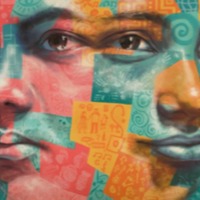
Witness B
There are an estimated 136,000 people living on conditions of modern slavery in the United Kingdom (Global Slavery Index 2018). According to the 2017 annual figures provided by the National Crime Agency, 5, 145 potential victims of modern slavery were referred through the National Referral Mechanism in 2017, of whom 2,454 were female, 2688 were male and 3 were transgender, with 41% of all referrals being children at the time of exploitation. People are subjected to slavery in the UK in the form of domestic servitude, labour exploitation, organ harvesting and sexual exploitation, with the largest number of potential victims originating from Albania, China, Vietnam and Nigeria. This data however does not consider the unknown numbers of victims that are not reported. Witness B was brought to the United Kingdom by her employer to work as a domestic worker to support her family. Upon arrival, Witness B was not fed, was subjected to physical abuse and was not paid for their work. After 12 weeks she ran away, scared for her life. Though Witness B was helped by a charity organisation under the National Referral Mechanism, she was still unable to work in the UK and provide for her family. Witness B tells of her experience of the current support system in place in the UK for human trafficking survivors, believing it inadequate for trafficked domestic workers such as herself.

Wendy
There are an estimated 403,000 people living in modern slavery in the United States (GSI 2018). Sex trafficking exists throughout the country. Traffickers use violence, threats, lies, debt bondage and other forms of coercion to compel adults and children to engage in commercial sex acts against their will. The situations that sex trafficking victims face vary, many victims become romantically involved with someone who then forces them into prostitution. Others are lured with false promises of a job, and some are forced to sell sex by members of their own families. Victims of sex trafficking include both foreign nationals and US citizens, with women making up the majority of those trafficked for the purposes of commercial sexual exploitation. In 2015, the most reported venues/industries for sex trafficking included commercial-front brothels, hotel/motel-based trafficking, online advertisements with unknown locations, residential brothels, and street-based sex trafficking. Wendy Barnes was trafficked from the age of 15 across the US West Coast for nearly 15 years, from the mid 1980s until 2000. Her trafficker, Gregory Leon Hightower, was eventually arrested and sentenced to life in prison in Oregon. Wendy now lives in Southern California and works full time as a customer service representative. Her narrative is from an interview with Francine Sporenda for the Révolution Féministe website, originally published in French and then in English by Nordic Model Now!, a UK secular, feminist, grassroots women’s group campaigning for the abolition of prostitution and related practices. Wendy has published a book about her experiences titled And Life Continues: Sex Trafficking and My Journey to Freedom (2015).

Kylee
There are an estimated 403,000 people living in modern slavery in the United States (GSI 2018). Sex trafficking exists throughout the country. Traffickers use violence, threats, lies, debt bondage and other forms of coercion to compel adults and children to engage in commercial sex acts against their will. The situations that sex trafficking victims face vary, many victims become romantically involved with someone who then forces them into prostitution. Others are lured with false promises of a job, and some are forced to sell sex by members of their own families. Victims of sex trafficking include both foreign nationals and US citizens, with women making up the majority of those trafficked for the purposes of commercial sexual exploitation. In 2015, the most reported venues/industries for sex trafficking included commercial-front brothels, hotel/motel-based trafficking, online advertisements with unknown locations, residential brothels, and street-based sex trafficking. Kylee Gregg was trafficked in rural Ohio from the age of 10 until she was 14, beginning in 2010. She told her story at the age of 18, as a college student, during an interview with Francine Sporenda for the Révolution Féministe website. It was originally published in French and then in English by Nordic Model Now!, a UK secular, feminist, grassroots women’s group campaigning for the abolition of prostitution and related practices. Kylee identifies as a lesbian radical feminist and runs an activist organisation called Womyn Unleashed.
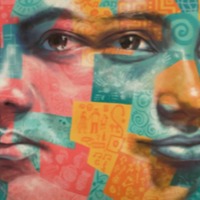
Wulan
There are an estimated 10,000 people living in modern slavery in Hong Kong (GSI 2018). Approximately 370,000 foreign domestic workers, primarily from Indonesia and the Philippines, work in Hong Kong; some become victims of forced labour in the private homes in which they are employed. An NGO report released in 2016 estimated as many as one in six foreign domestic workers is a victim of labour exploitation. Employment agencies often charge job placement fees in excess of legal limits, and sometimes withhold identity documents, which may lead to situations of debt bondage of workers in Hong Kong. The accumulated debts sometimes amount to a significant portion of the worker’s first year salary. Some employers or employment agencies illegally withhold passports, employment contracts, or other possessions until the debt is paid. Some workers are required to work up to 17 hours per day, experience verbal, sexual or physical abuse in the home, and/or are not granted a legally required weekly day off. Wulan was trafficked from Indonesia to Hong Kong for domestic work. Upon arriving at the agency Wulan’s personal documents were taken and she was told she must work to pay off her recruitment fees.
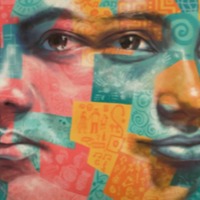
WS
There are an estimated 10,000 people living in modern slavery in Hong Kong (GSI 2018). Approximately 370,000 foreign domestic workers, primarily from Indonesia and the Philippines, work in Hong Kong; some become victims of forced labour in the private homes in which they are employed. An NGO report released in 2016 estimated as many as one in six foreign domestic workers is a victim of labour exploitation. Employment agencies often charge job placement fees in excess of legal limits, and sometimes withhold identity documents, which may lead to situations of debt bondage of workers in Hong Kong. The accumulated debts sometimes amount to a significant portion of the worker’s first year salary. Some employers or employment agencies illegally withhold passports, employment contracts, or other possessions until the debt is paid. Some workers are required to work up to 17 hours per day, experience verbal, sexual or physical abuse in the home, and/or are not granted a legally required weekly day off. WS, a 25-year-old woman from Ponorogo, Indonesia was trafficked to Hong Kong for domestic work.
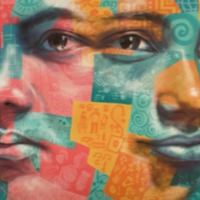
TR
There are an estimated 10,000 people living in modern slavery in Hong Kong (GSI 2018). Approximately 370,000 foreign domestic workers, primarily from Indonesia and the Philippines, work in Hong Kong; some become victims of forced labour in the private homes in which they are employed. An NGO report released in 2016 estimated as many as one in six foreign domestic workers is a victim of labour exploitation. Employment agencies often charge job placement fees in excess of legal limits, and sometimes withhold identity documents, which may lead to situations of debt bondage of workers in Hong Kong. The accumulated debts sometimes amount to a significant portion of the worker’s first year salary. Some employers or employment agencies illegally withhold passports, employment contracts, or other possessions until the debt is paid. Some workers are required to work up to 17 hours per day, experience verbal, sexual or physical abuse in the home, and/or are not granted a legally required weekly day off. TR, a 29-year-old woman was trafficked from Indramayu, Indonesia to Hong Kong for domestic work.
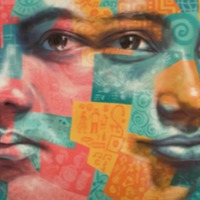
Putri
There are an estimated 10,000 people living in modern slavery in Hong Kong (GSI 2018). Approximately 370,000 foreign domestic workers, primarily from Indonesia and the Philippines, work in Hong Kong; some become victims of forced labour in the private homes in which they are employed. An NGO report released in 2016 estimated as many as one in six foreign domestic workers is a victim of labour exploitation. Employment agencies often charge job placement fees in excess of legal limits, and sometimes withhold identity documents, which may lead to situations of debt bondage of workers in Hong Kong. The accumulated debts sometimes amount to a significant portion of the worker’s first year salary. Some employers or employment agencies illegally withhold passports, employment contracts, or other possessions until the debt is paid. Some workers are required to work up to 17 hours per day, experience verbal, sexual or physical abuse in the home, and/or are not granted a legally required weekly day off. Putri was trafficked from Indonesia to Hong Kong into domestic slavery. She tells of her experience in a training centre.
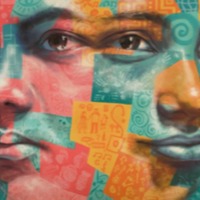
NS
There are an estimated 10,000 people living in modern slavery in Hong Kong (GSI 2018). Approximately 370,000 foreign domestic workers, primarily from Indonesia and the Philippines, work in Hong Kong; some become victims of forced labour in the private homes in which they are employed. An NGO report released in 2016 estimated as many as one in six foreign domestic workers is a victim of labour exploitation. Employment agencies often charge job placement fees in excess of legal limits, and sometimes withhold identity documents, which may lead to situations of debt bondage of workers in Hong Kong. The accumulated debts sometimes amount to a significant portion of the worker’s first year salary. Some employers or employment agencies illegally withhold passports, employment contracts, or other possessions until the debt is paid. Some workers are required to work up to 17 hours per day, experience verbal, sexual or physical abuse in the home, and/or are not granted a legally required weekly day off. NS, a 26-year-old woman from Jakarta was trafficked to Hong Kong for domestic work.
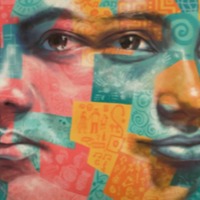
NE
There are an estimated 10,000 people living in modern slavery in Hong Kong (GSI 2018). Approximately 370,000 foreign domestic workers, primarily from Indonesia and the Philippines, work in Hong Kong; some become victims of forced labour in the private homes in which they are employed. An NGO report released in 2016 estimated as many as one in six foreign domestic workers is a victim of labour exploitation. Employment agencies often charge job placement fees in excess of legal limits, and sometimes withhold identity documents, which may lead to situations of debt bondage of workers in Hong Kong. The accumulated debts sometimes amount to a significant portion of the worker’s first year salary. Some employers or employment agencies illegally withhold passports, employment contracts, or other possessions until the debt is paid. Some workers are required to work up to 17 hours per day, experience verbal, sexual or physical abuse in the home, and/or are not granted a legally required weekly day off. NE, a 29-year-old woman from Ponorogo (2008-2010), was promised a salary of HK$4,000 (US$515) by her broker, but found out at the training centre in Jakarta that her actual salary would be much lower.
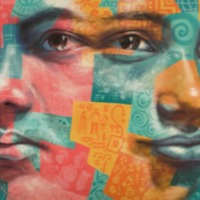
Lestari
Approximately 370,000 foreign domestic workers, primarily from Indonesia and the Philippines, work in Hong Kong; some become victims of forced labour in the private homes in which they are employed. An NGO report released in 2016 estimated as many as one in six foreign domestic workers is a victim of labour exploitation. Employment agencies often charge job placement fees in excess of legal limits, and sometimes withhold identity documents, which may lead to situations of debt bondage of workers in Hong Kong. The accumulated debts sometimes amount to a significant portion of the worker’s first year salary. Some employers or employment agencies illegally withhold passports, employment contracts, or other possessions until the debt is paid. Some workers are required to work up to 17 hours per day, experience verbal, sexual or physical abuse in the home, and/or are not granted a legally required weekly day off. Lestari was trafficked to Hong Kong from Indonesia from 2008-2012 when she sought out domestic work through an agency.